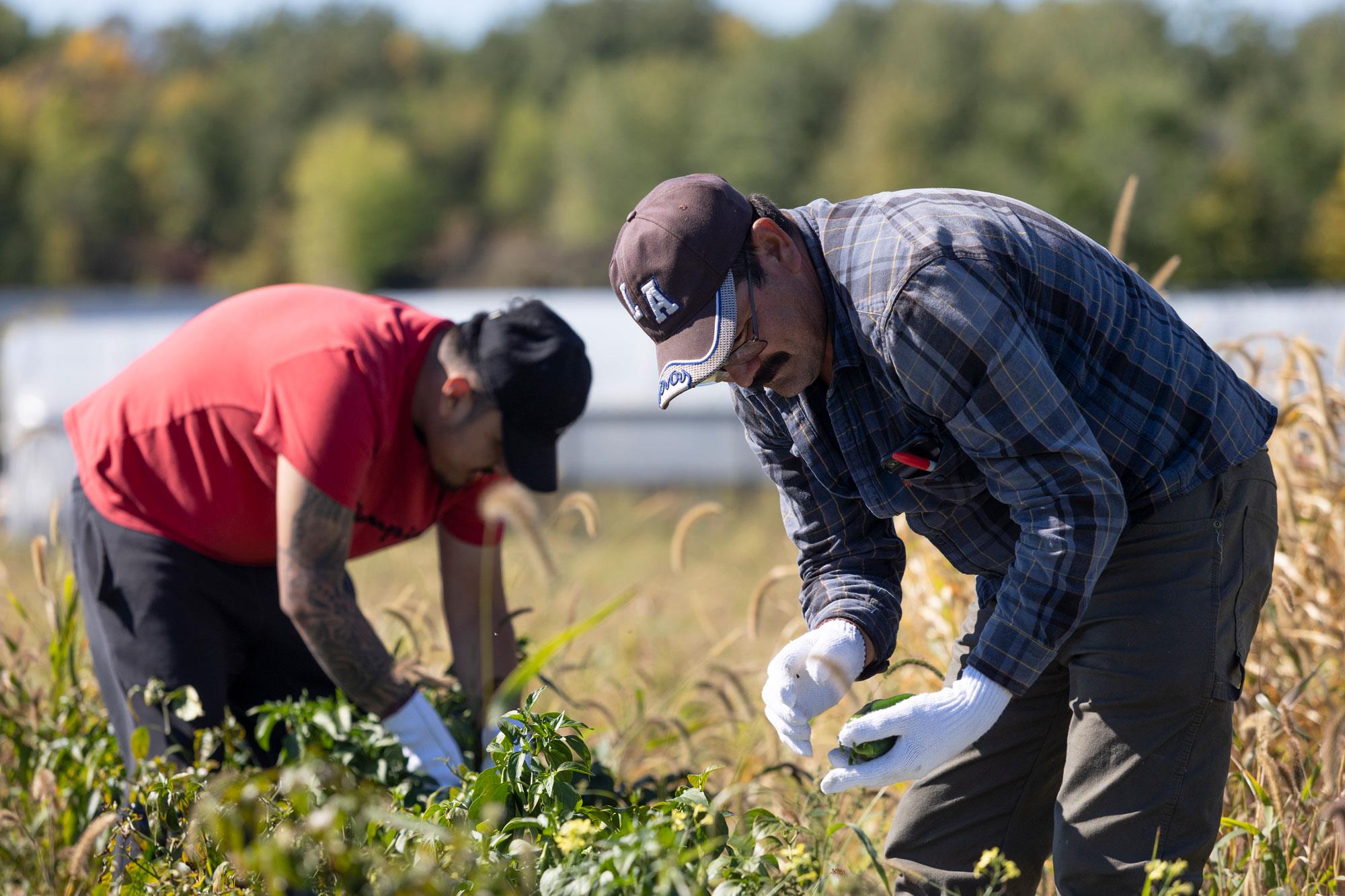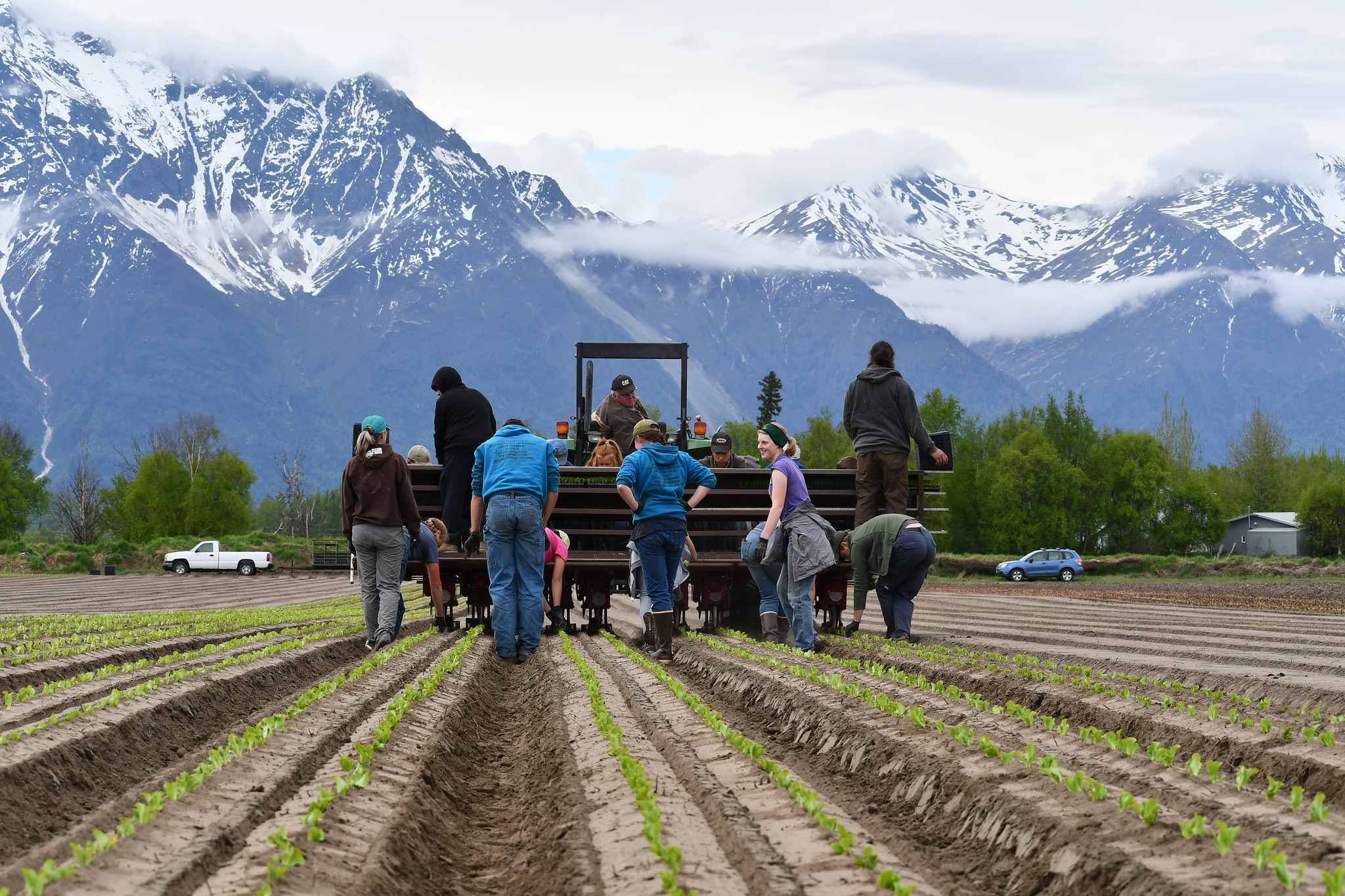Home>Gardening News and Trends>Latest News>What Is Church Planting


Latest News
What Is Church Planting
Modified: January 22, 2024
Discover the Latest News and Insights on Church Planting. Stay informed about the strategies, trends, and success stories in this growing movement.
(Many of the links in this article redirect to a specific reviewed product. Your purchase of these products through affiliate links helps to generate commission for Chicagolandgardening.com, at no extra cost. Learn more)
Table of Contents
Introduction
Welcome to the world of church planting, where faith, passion, and a deep sense of calling come together to establish vibrant and impactful communities of believers. Church planting is an age-old practice that involves starting new churches with the goal of reaching and impacting different communities, cultures, and generations with the message of hope and salvation.
This article will take you on a journey to explore the dynamic and transformative world of church planting. We will delve into its definition, historical significance, reasons behind its work, the process involved, and the various challenges and benefits that come with it. Additionally, we will highlight different models of church planting and share inspiring success stories to showcase the impact it can have on individuals and communities.
Church planting is not a new concept. It has its roots in the early Christian church, where the disciples spread the message of Jesus Christ and established new communities of believers. Throughout history, church planting has been a vital part of the growth and expansion of Christianity, both geographically and spiritually.
Today, church planting continues to be an important endeavor as the church seeks to adapt to the changing needs of society and reach the unreached with the transformative power of the gospel. Communities around the world are in need of vibrant and relevant expressions of faith that can bring hope, healing, and positive change.
The reasons behind church planting are diverse and multi-faceted. Firstly, it allows for the multiplication of local churches, providing more opportunities for people to experience God’s love and work. Secondly, church planting helps to reach those who may not be reached through traditional church models, reaching different demographic groups and cultural contexts.
Furthermore, church planting allows for contextualization, ensuring that the message of Christ is communicated in a way that resonates with the local community and culture. This leads to the formation of communities that reflect the values and needs of the people they serve, fostering a sense of belonging and authentic spiritual growth.
The process of church planting involves a deliberate and strategic approach. It requires individuals or teams with a strong sense of calling, equipped with the necessary skills and resources to effectively establish a new church. This includes assessing the needs of the target community, developing a vision and strategy, gathering a core team of believers, and navigating the various administrative, logistical, and spiritual challenges that come with starting a new church.
Church planting is not without its challenges. It requires perseverance, resilience, and a reliance on God’s guidance and provision. Common challenges include building a strong leadership team, securing funding and resources, establishing credibility within the community, and navigating cultural barriers.
Despite the challenges, the benefits of church planting are substantial. It brings fresh expressions of faith to communities, creates opportunities for personal growth and discipleship, fosters unity and collaboration among believers, and impacts society by addressing social, emotional, and spiritual needs. Church planting is a powerful vehicle for bringing transformation, hope, and the love of Christ into the world.
In the next sections, we will explore different models of church planting and share success stories that highlight the impact that these communities are making. Church planting is not just a historical concept, but a living and breathing movement that continues to shape lives and communities today.
Definition of Church Planting
Church planting is the intentional process of establishing and nurturing new Christian communities with the purpose of reaching and engaging people with the message of the gospel. It involves starting a new church from scratch, often in areas where there is a need for a fresh expression of faith or where existing churches may not be effectively meeting the needs of the community. Church planting is a dynamic and strategic endeavor that aims to create vibrant communities of believers who are passionate about serving God and making a positive impact in their surrounding areas.
Church planting goes beyond simply opening a new building or holding worship services. It is about building relationships, creating a sense of belonging, and facilitating spiritual growth and transformation. The goal is to establish a faith community that reflects the unique needs and culture of the surrounding area, while remaining grounded in biblical teachings and principles.
Church planters are individuals or teams who feel called by God to pioneer a new work of faith. They are passionate about sharing the love of Christ with others and are committed to making a lasting impact in their communities. Church planters often possess a wide range of skills, including leadership, communication, and the ability to connect with people from different backgrounds and walks of life.
Church planting can take various forms, depending on the context and specific needs of the community. It can involve starting a church from scratch, gathering a core group of believers, and slowly building a congregation. Alternatively, it can take the form of planting a satellite or multi-site church, where an existing church expands its reach by establishing additional campuses in different locations. Another model is known as a “daughter” church, where an existing church plants a new congregation that operates independently but is still connected to the parent church.
Regardless of the specific model, church planting is driven by a desire to bring the transformative love of Christ to individuals and communities that may not have access to a vibrant, relevant, and authentic expression of faith. It is an opportunity to meet people where they are, address their spiritual, emotional, and physical needs, and guide them on a journey toward a deeper relationship with God.
Church planting is not confined to traditional church structures or settings. It can take place in urban centers, rural areas, college campuses, or even online. The focus is on meeting people where they are and creating environments where they can encounter God and experience the power of Christian community.
While the process of church planting is filled with challenges and requires dedication and perseverance, the impact can be immeasurable. It has the power to transform lives, families, and entire communities as the love and truth of Christ are proclaimed and lived out in tangible ways. Church planting is a vital and dynamic expression of the church’s mission to make disciples and bring God’s kingdom to earth.
History of Church Planting
The history of church planting is intertwined with the history of Christianity itself. From its early beginnings, the Christian faith has been marked by a desire to spread the message of Jesus Christ to new regions and cultures, leading to the establishment of new communities of believers.
In the first century, following the resurrection of Jesus Christ, the disciples and apostles embarked on a mission to share the gospel with the world. They played a crucial role in establishing new churches and spreading the teachings of Jesus throughout the Roman Empire and beyond. These early efforts can be seen as the foundation of church planting as it is known today.
During the subsequent centuries, church planting continued to be an essential part of Christian expansion. As the faith spread to different parts of the world, new churches were established to meet the spiritual needs of emerging communities. Missionaries were dispatched to far off lands, often facing significant challenges and persecution, yet showing great determination in their efforts to bring the message of Christ to new regions.
One significant period in the history of church planting was the Protestant Reformation in the 16th century. The reformers, such as Martin Luther, John Calvin, and others, not only sought to bring about theological renewal but also emphasized the importance of establishing new churches based on biblical principles. This led to the formation of numerous Protestant denominations and the planting of churches that would promote the reformers’ teachings.
Throughout history, church planting has been driven by various motivations. Some sought to spread Christianity to regions where it was not yet present, while others focused on bringing renewal and revitalization to existing churches. In some cases, church planting was also influenced by political and colonial interests, with colonial powers using it as a means to exert control or gain influence over new territories.
As the world changed and societies evolved, the methods and approaches to church planting also adapted. Over time, new strategies were developed to reach specific demographics or address unique challenges. This led to the emergence of different models of church planting, including indigenous church planting, urban church planting, and multiethnic church planting, among others.
Today, church planting continues to be a vibrant and dynamic movement, with individuals and organizations engaging in efforts to establish new churches and communities of faith. The context may have changed, but the mission remains the same – to share the good news of Jesus Christ and establish vibrant expressions of Christian community that can meet the spiritual needs of people in diverse cultures and settings.
Church planting has proven to be an effective approach in reaching the unreached, breathing new life into existing churches, and addressing the spiritual hunger of individuals and communities. It is a testament to the enduring vision and commitment of Christians throughout history who have sought to participate in God’s redemptive work by establishing communities of faith that reflect His love, grace, and truth.
Reasons for Church Planting
Church planting is driven by a variety of reasons, all centered around the overarching goal of spreading the message of the gospel and establishing vibrant communities of believers. It is a response to the needs and challenges of our evolving society and serves as a strategic approach to reach the lost, revitalize existing churches, and meet the spiritual, emotional, and social needs of individuals and communities.
One of the primary reasons for church planting is the multiplication of local churches. As the population grows and new communities emerge, there is a need for more churches to provide spaces where people can gather, worship, and grow in their faith. By planting new churches, the opportunities for individuals to encounter God, connect with others, and be discipled are increased.
Church planting is also a response to the changing demographics and cultural dynamics that exist within communities. People from different ethnic and cultural backgrounds have unique needs and ways of relating to God and others. By planting churches that are specifically tailored to their cultural context, barriers to understanding and engagement can be overcome, allowing for the gospel to be communicated effectively.
Another reason for church planting is the desire to reach those who may not be reached through traditional church models. In some areas, existing churches may not effectively connect with certain demographic groups or effectively address the needs of the community. By planting churches that are intentionally designed to reach these specific groups, such as college students, young families, or immigrants, the barriers to entry are minimized, and individuals are given a chance to encounter Christ in a way that resonates with their lives.
Church planting also allows for contextualization. Different communities have unique cultural expressions, social dynamics, and spiritual needs. By planting churches that are deeply rooted in the local context, the message of the gospel can be communicated in a way that is relevant and meaningful to the people in that community. This promotes a sense of ownership and authenticity, fostering a greater impact on individuals and society at large.
Additionally, church planting provides opportunities for innovation, creativity, and experimentation in ministry. New churches have the flexibility to try new approaches, utilize emerging technologies, and adapt to the rapidly changing cultural landscape. This can lead to fresh expressions of faith and outreach strategies that connect with the evolving needs of the community.
Church planting also serves as a catalyst for community transformation. Churches are not merely places of worship; they are agents of change. By planting churches that intentionally engage with the social, economic, and spiritual needs of the community, positive transformation can take place. This can include initiatives such as community service programs, counseling services, educational support, and addressing systemic issues of injustice and inequality.
Finally, church planting helps to foster collaboration and unity among believers. It brings together individuals from different backgrounds and walks of life, creating a diverse and vibrant community of believers. This unity extends beyond the local church, as church planters often collaborate and partner with other churches, organizations, and denominations to maximize their impact and resource sharing.
Church planting is not just a response to a specific need or trend; it is a vital and strategic approach to fulfilling the Great Commission. It provides a platform for believers to engage with the world, share the love of Christ, and establish communities of faith that bring transformation and hope to individuals and society.
The Process of Church Planting
Church planting is a deliberate and strategic process that involves various stages and steps. While the specific details may vary depending on the context and model of church planting, certain key elements are commonly present in the process.
The first stage of church planting is an assessment of the needs and opportunities within a specific community. This involves researching the demographic makeup, cultural dynamics, and spiritual climate of the area. Understanding the unique characteristics and challenges of the community is essential for developing an effective strategy for planting a church.
Once the assessment is complete, the next step is to develop a clear vision and mission for the new church. This includes defining the core values, goals, and target audience of the church plant. The vision serves as a guiding light, providing direction and purpose throughout the entire process.
Gathering a core team of believers is another crucial step in the process. This group of individuals shares the vision and is committed to planting and nurturing the new church. Each team member brings their unique gifts, skills, and perspectives, contributing to the overall effectiveness and diversity of the new church plant.
With a core team in place, the process moves into the launch phase. This involves organizing the initial worship gatherings, community events, and outreach initiatives. It is a time of building relationships, engaging with the community, and introducing the vision and mission of the church plant.
The launch phase is also an opportunity to establish a strong foundation of discipleship and spiritual formation within the new church. This may involve offering small groups, Bible studies, and mentoring relationships to help individuals grow in their faith and develop as leaders within the church plant.
As the new church begins to grow and gain momentum, there is a need to develop leadership within the congregation. This includes identifying and equipping individuals to serve in various leadership roles, such as pastors, elders, and ministry leaders. Investing in leadership development is crucial for the long-term sustainability and impact of the church plant.
Throughout the process, it is important to cultivate a culture of worship, community, and compassion within the new church. This involves creating engaging and meaningful worship experiences, fostering authentic relationships and community among members, and actively serving and reaching out to the surrounding community.
Simultaneously, the administrative and logistical aspects of church planting must be addressed. This includes securing a place of worship, developing a budget and financial plan, managing resources, and establishing systems and processes for effective communication, record-keeping, and church administration.
As the new church plant matures, it is crucial to continually evaluate and adapt the strategies and methods being employed. This allows for ongoing growth, improvement, and alignment with the evolving needs and dynamics of the community. Flexibility and a willingness to learn from mistakes and successes are key attributes in this phase.
Church planting is a journey that requires perseverance, faith, and reliance on God’s guidance and provision. It is a process that involves prayer, careful planning, intentional action, and a deep love for people and a passion for the gospel. While challenging, the process of church planting is filled with excitement, transformation, and the opportunity to witness lives and communities being changed through the power of Jesus Christ.
Challenges in Church Planting
While church planting is an exciting and rewarding endeavor, it is not without its challenges. Church planters face various obstacles and hurdles throughout the process that require resilience, adaptation, and a deep reliance on God’s guidance. Understanding and navigating these challenges is crucial for the success and sustainability of a new church plant.
One of the primary challenges in church planting is building a strong leadership team. Finding individuals with the right mix of skills, experience, and passion for the vision can be a complex task. It requires discernment and intentional investment in developing leadership capacity within the church plant.
Securing funding and resources is another significant challenge. Church plants often rely on donations and support from individuals and organizations, which can be unpredictable and inconsistent. Developing a sustainable financial plan and cultivating a generous culture within the church are essential to overcome this challenge.
Establishing credibility within the community can also be difficult, especially in areas where there may be skepticism or a negative perception of organized religion. Building trust and credibility through consistent presence, genuine relationships, and meaningful community involvement is crucial for gaining the respect and acceptance of the local community.
Cultural barriers and differences may pose challenges in church planting, particularly when reaching out to diverse demographics. Understanding and respecting different cultural customs, beliefs, and practices can help bridge the gap and create an environment of inclusivity and acceptance within the church plant.
Additionally, church planting often involves dealing with the unknown and stepping into uncharted territory. The process requires taking risks and embracing uncertainty, which can be uncomfortable and intimidating. Church planters need to be willing to step out in faith, trust in God’s provision, and adapt their plans based on His leading.
Another challenge is effectively reaching and engaging the target audience. In today’s busy and distracted society, capturing the attention and interest of individuals can be challenging. Utilizing creative and innovative communication strategies, such as online platforms and social media, can help engage people and foster connections with the church.
Finally, the emotional and spiritual well-being of the church planter can also be a challenge. Church planting demands significant time, energy, and sacrifice. It is crucial for church planters to prioritize self-care, seek support from a community of fellow planters or mentors, and maintain a healthy work-life balance.
Despite these challenges, church planting presents an incredible opportunity to see lives transformed, communities impacted, and God’s kingdom advanced. With perseverance, faith, and a willingness to learn and adapt, church planters can overcome these obstacles and experience the joy of building a thriving community of believers rooted in the love and truth of Jesus Christ.
Benefits of Church Planting
Church planting offers a multitude of benefits that impact not only the individuals involved but also the broader community. As new churches are established and grow, they bring unique blessings and opportunities for personal growth, spiritual transformation, and societal impact.
One of the key benefits of church planting is the multiplication of local churches. By starting new congregations, more people have the opportunity to experience the transformative power of God’s love and be a part of a faith community. This allows for a greater reach and impact in a particular area or demographic group.
Church planting also fosters innovation and creativity in ministry. New churches have the flexibility to explore different approaches to worship, discipleship, and community outreach. This openness to new ideas and methods can lead to fresh expressions of faith that resonate with the needs and cultural context of the community.
The establishment of new churches brings a renewed sense of spiritual vibrancy and passion. Church plants often attract individuals who are seeking a deeper connection with God and a community that embodies the values and teachings of Jesus Christ. This infusion of enthusiasm creates an atmosphere of spiritual fervor, inspiring both the new believers and those who have been a part of the church for some time.
Church planting promotes community and authentic relationships. As new churches form, there is a sense of common purpose and unity among the members. This creates a supportive environment where individuals can build genuine connections, find belonging, and experience the love and care of their fellow believers.
Furthermore, church planting addresses specific needs and reaches diverse demographics. Planting churches that are tailored to specific cultural contexts or demographic groups ensures that the message of the gospel is communicated effectively and resonates with the people being reached. It can break down barriers and facilitate a deeper understanding of God’s love among individuals who may have felt disconnected or disengaged from traditional church settings.
Church plants also have the potential to bring about significant community transformation. Churches that engage with the practical needs of the community, such as offering educational programs, support for families, or addressing social injustices, can positively impact the lives of individuals and families. Additionally, the presence of a church can foster unity, collaboration, and a shared sense of purpose within the broader community.
Church planting is also an opportunity for personal growth and discipleship. As new churches are planted, individuals are encouraged to step into leadership roles, develop their God-given gifts and talents, and actively participate in ministry. This enables them to grow spiritually, deepen their understanding of the Scriptures, and make a difference in the lives of others.
Finally, church planting contributes to the continued growth and expansion of the global Church. By establishing new faith communities and reaching those who would not have been reached otherwise, the impact of the gospel message is extended into new regions, cultures, and generations. This results in a greater representation of the diversity and unity of the Body of Christ.
The benefits of church planting extend far beyond the individuals involved and have the potential to positively transform communities and societies. By embracing the call to plant churches, believers can be agents of change, impacting the spiritual, emotional, and social well-being of individuals and communities for generations to come.
Different Models of Church Planting
Church planting can take on various models, each with its unique approach and strategies. These different models of church planting aim to address specific needs, demographics, and cultural contexts, providing diverse avenues for reaching and impacting communities with the message of the gospel.
One common model is the “mother-daughter” church planting model. In this model, an existing established church, referred to as the “mother” church, plants a new congregation, known as the “daughter” church. The mother church provides guidance, resources, and support to assist the daughter church in its growth and development. This model allows for the multiplication of churches while maintaining a strong connection and support system between the new church and its parent church.
Another model is known as the “satellite” or “multi-site” church planting model. In this model, an existing church expands its reach by establishing additional locations or campuses in different areas. These satellite campuses are an extension of the main church, sharing its vision, values, and leadership. This model allows for a broader geographical reach and growth in different communities while maintaining a sense of unity and connection within the overall church family.
Urban church planting focuses on reaching and impacting individuals and communities in urban areas. Urban centers present unique challenges and opportunities due to high population density, cultural diversity, and societal complexities. Urban church plants often adopt innovative strategies, such as utilizing creative arts, hosting community events, and engaging in social justice initiatives to effectively connect with and meet the needs of the urban population.
Rural church planting, on the other hand, is tailored to the unique needs of rural communities. Rural areas often present challenges of geographical dispersion, limited resources, and a sense of isolation. Church plants in rural areas typically emphasize community engagement, investing in relationships with local residents, and addressing the practical needs of the community, such as agricultural support, education, and healthcare.
Multiethnic church planting recognizes the growing diversity in societies and seeks to establish churches that reflect and celebrate this diversity. These churches intentionally reach out to multicultural and multilingual communities, aiming to create spaces where people from different ethnic backgrounds can worship, grow, and serve together. Multiethnic church plants emphasize cross-cultural understanding, inclusion, and unity in Christ, becoming a microcosm of the global Church.
Furthermore, house church planting models involve gathering believers in smaller, intimate settings, such as homes, rather than traditional church buildings. House churches prioritize relational connections, fostering a sense of family and community among participants. This model can be particularly effective in regions where there are legal or cultural restrictions on traditional church gatherings.
Additional models of church planting include collegiate church planting, which focuses on reaching and ministering to college students on campuses; networked church planting, where multiple churches collaborate and share resources to plant new congregations; and online church planting, utilizing digital platforms to create virtual, global faith communities.
These various models of church planting demonstrate the adaptability and creativity of believers in responding to the specific needs and opportunities within different contexts. Each model has its own strengths and challenges, but they all share a common goal: to establish vibrant, relevant, and transformative communities of faith that reach and impact individuals and communities with the love and message of Jesus Christ.
Success Stories in Church Planting
Church planting has yielded numerous success stories, showcasing the transformative power of faith and the impact that new churches can have on individuals and communities. These success stories serve as sources of inspiration and encouragement, offering a glimpse into the potential of church planting to bring about lasting change and spiritual growth.
One remarkable success story is the Saddleback Church, planted by Pastor Rick Warren in 1980 in Lake Forest, California. Today, Saddleback Church is one of the largest churches in the United States, with multiple campuses and a global reach. It is known for its engagement with the local community, commitment to discipleship, and social justice initiatives, including the P.E.A.C.E. Plan, which addresses global issues such as poverty, illiteracy, and disease.
The story of Redemption Church in Tempe, Arizona is another powerful example. Planted in 2009, Redemption Church has grown into a thriving faith community that impacts individuals and the city. The church actively engages with the local arts scene, hosts community events, and partners with organizations to address social issues such as homelessness and addiction. Their commitment to community transformation has resulted in numerous lives being transformed by the gospel.
Church of the Highlands in Birmingham, Alabama is a success story that highlights the impact of multi-site church planting. Planted in 2001, the church has expanded to multiple campuses across Alabama, impacting thousands of lives. Despite their growth, Church of the Highlands maintains a strong focus on building relationships and creating a sense of belonging within their church family, making it accessible to individuals across various communities.
In international contexts, the success story of LifeChurch.tv is noteworthy. Originating in the United States, LifeChurch.tv expanded to launch the YouVersion Bible App, which has been downloaded millions of times worldwide. This app has revolutionized access to the Scriptures, enabling individuals around the globe to engage with God’s Word and grow in their faith. The success of LifeChurch.tv showcases the potential of church planting to impact beyond physical church gatherings.
Additionally, the success story of Hillsong Church in Sydney, Australia has captured the attention of many. Hillsong Church started as a small gathering in 1983 and has since grown into an internationally recognized church. Known for its worship music, conferences, and global humanitarian efforts, Hillsong Church has successfully planted churches in various parts of the world, impacting countless lives with the message of Jesus Christ.
Another inspiring success story is the church planting movement in South Korea. In the latter half of the 20th century, hundreds of thousands of churches were planted, leading to a significant spiritual movement. This movement resulted in the transformation of individuals, families, and communities, revitalizing and reshaping South Korean society on a massive scale.
These success stories demonstrate the transformative power of church planting and the potential for churches to make a lasting impact in their communities. They inspire and encourage church planters to persevere, dream big, and trust in God’s provision as they embark on the journey of planting new faith communities.
Conclusion
Church planting is a dynamic and transformative endeavor that seeks to establish vibrant communities of faith, reach the lost, and impact society with the message of the gospel. Throughout history, church planting has been an essential part of the growth and expansion of Christianity, adapting to the changing needs and contexts of different communities and cultures.
From the early apostles to modern-day success stories, church planting has proven to be a powerful vehicle for personal transformation, community engagement, and spiritual growth. It is driven by a deep sense of calling, a passion for reaching the unreached, and a desire to be agents of change in a world that is hungry for hope and purpose.
In this article, we have explored the definition and history of church planting, delved into the reasons behind its work, discussed the challenges and benefits it presents, and examined different models of church planting. We have also highlighted success stories that exemplify the impact and potential of church planting to bring about transformation and foster vibrant communities of faith.
Church planting is not without its challenges. The process requires perseverance, adaptability, and a reliance on God’s guidance and provision. Building strong leadership teams, securing funding and resources, establishing credibility within the community, and navigating cultural barriers are just a few of the hurdles that church planters may face.
However, the benefits of church planting are substantial. It multiplies opportunities for individuals to experience God’s love, fosters community and authentic relationships, addresses specific needs and reaches diverse demographics, promotes innovation and creativity in ministry, and contributes to community transformation. Church planting is a powerful expression of the mission of the Church and a tangible way to make a difference in the world.
In conclusion, church planting is a vital and transformative endeavor that requires faith, commitment, and a deep love for God and people. It presents opportunities for personal growth, community engagement, and spiritual impact. Church planters around the world continue to answer the call to plant seeds of faith, trusting in God’s provision and the power of the gospel to bring about lasting change. As we look to the future, let us continue to support, encourage, and participate in the ongoing movement of church planting, sharing the hope and love of Jesus with a world that is in desperate need.










